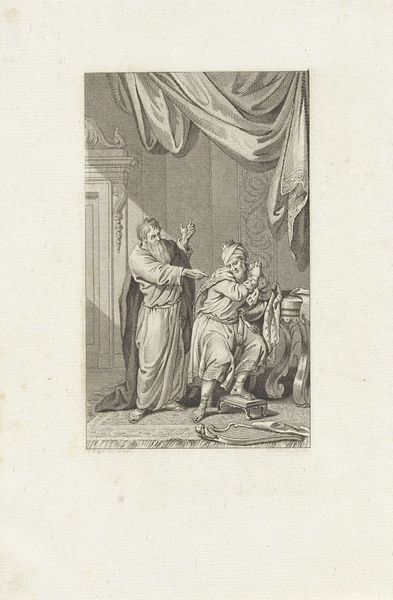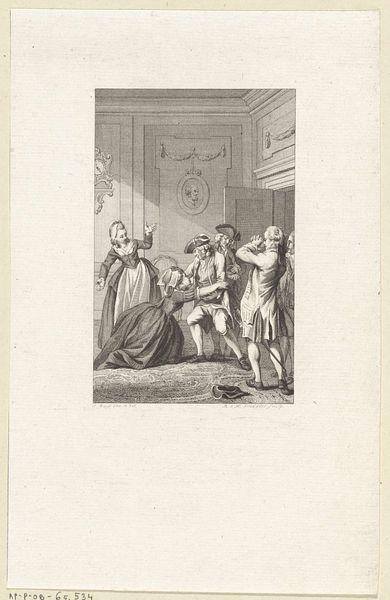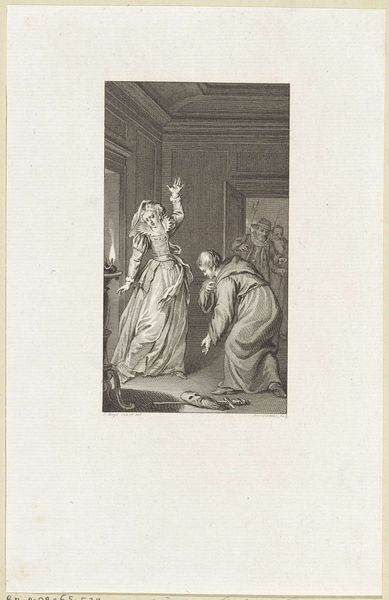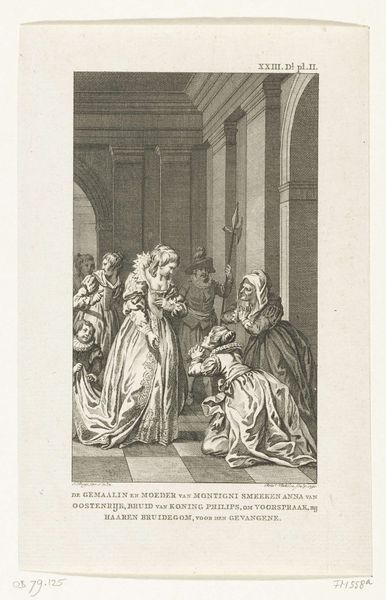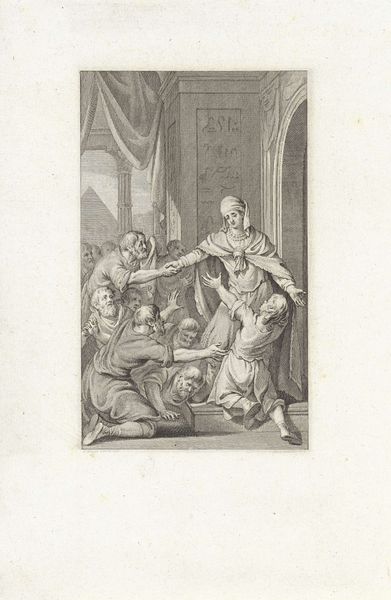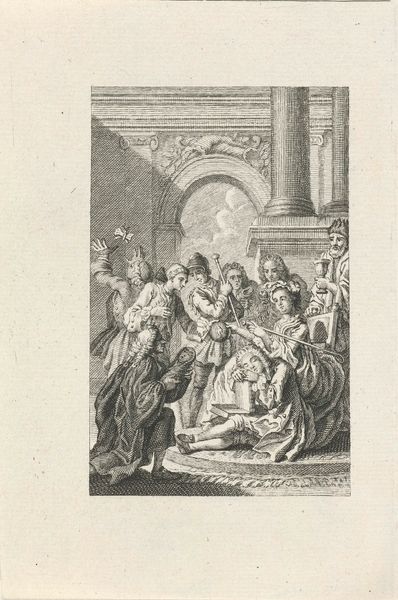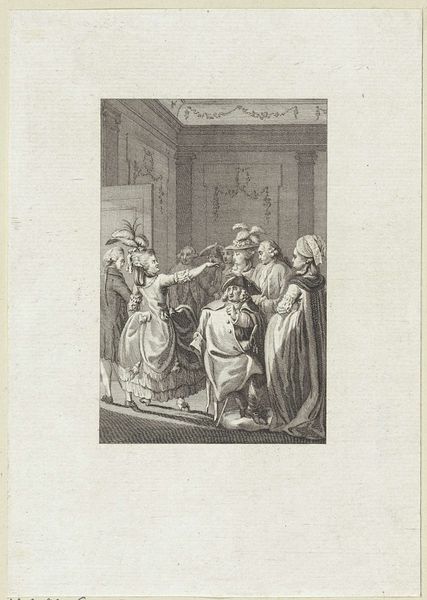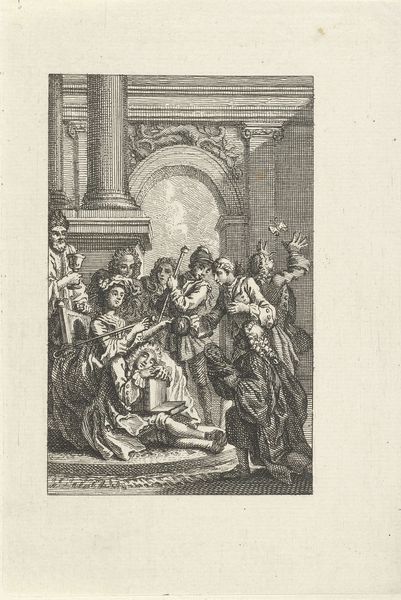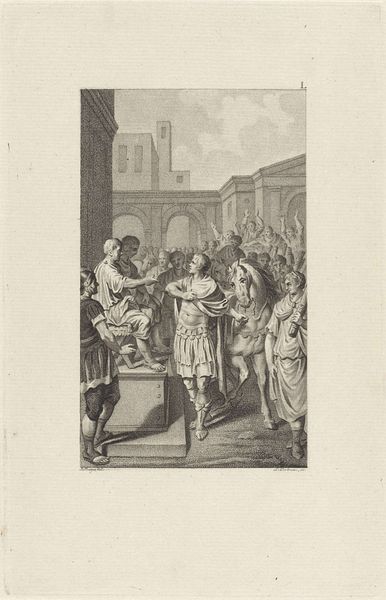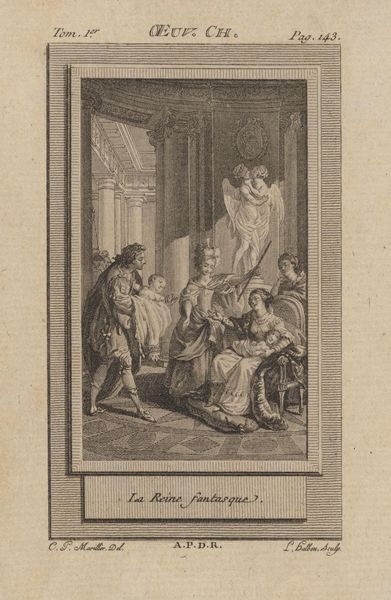
print, engraving
#
portrait
#
neoclacissism
# print
#
old engraving style
#
figuration
#
history-painting
#
academic-art
#
engraving
Dimensions: height 207 mm, width 136 mm
Copyright: Rijks Museum: Open Domain
Ludwig Gottlieb Portman created this print of Chiomara in Ortiagon, but we don't know exactly when. It depicts a story from ancient history that carries a complex set of cultural and political messages. The image shows the Gallic princess Chiomara confronting a Roman centurion who has betrayed her trust. The head on the floor is that of her captor, a leader who had sought to profit from her capture but was instead killed on her orders. Portman made this print in the neoclassical style, which was popular across Europe at the time. Its clean lines and stark drama evoke a sense of moral clarity. Yet, such images can also reproduce troubling power dynamics. Here, Chiomara is presented as a figure of exceptional virtue, but the print also reinforces the colonial gaze of European culture on the classical past. By examining the history of this image, we can better understand how art reflects the politics of its time. Resources in libraries, archives, and databases can help us learn more about the artist, the historical context, and the reception of the artwork.
Comments
No comments
Be the first to comment and join the conversation on the ultimate creative platform.
